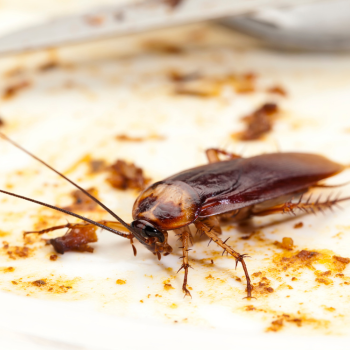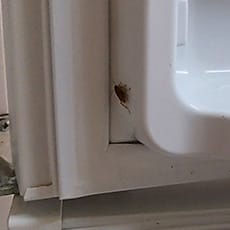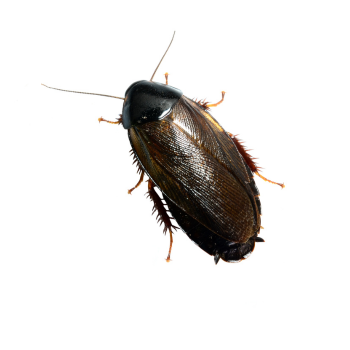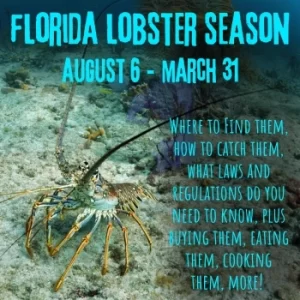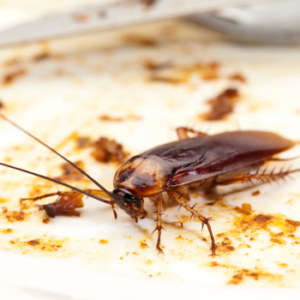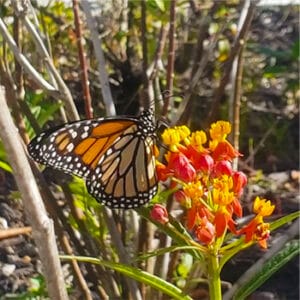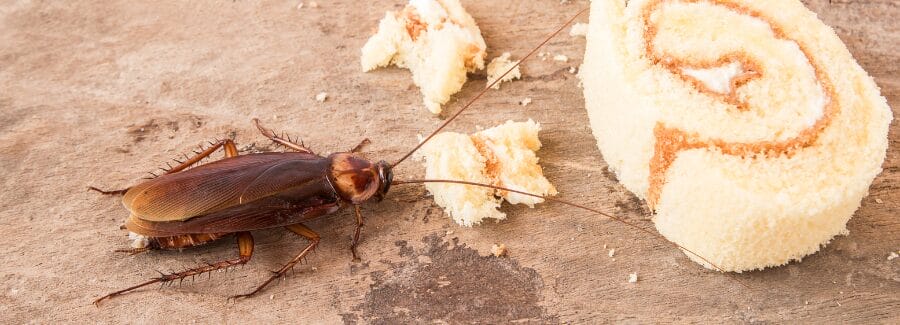
Cockroaches in Florida: Our Worst Creepy Crawlies
Cockroaches in Florida are the stuff of nightmares for many residents and visitors, and universally hated by most everyone. These persistent pests are more than just a household nuisance, they are rumored to be one of the only living creatures that can survive a nuclear blast!
But to know your enemy is to be able to understanding the different types in Florida, their origins, behaviors, and even their rare benefits… can help us better deal with these unwelcome guests.
Are Cockroaches and Roaches the Same Thing?
It might get confusing when some people say cockroach, and some say roach… are they the same thing?
The answer is… sort of. “Cockroach” is the umbrella term for these creepy crawlies, while “roach” is a more informal term. Go ahead and use either term, they’re both talking about the same gross insects.
The Roach Population is Big, Diverse and Creepy!
Cockroaches are a diverse group of insects with approximately 4,600 known species worldwide. These resilient creatures belong to the order Blattodea, which also includes termites.
In the United States, there are about 70 species of cockroaches. However, only a handful of these species are commonly found in homes and urban environments.
Florida, with its warm and humid climate, is home to around 30 species of cockroaches. The favorable conditions in Florida make it an ideal habitat for these pests, contributing to their high prevalence in the state.
Most Common Cockroaches in Florida
There are four most common cockroaches in Florida that wander into households to freak out those inside. While there are 30 species of roaches that live in Florida… these four are the main four to know.
German Cockroach (THE WORST TYPE OF ROACHES TO HAVE IN YOUR HOME!)
Meet the German cockroach, the undisputed king of unwelcome visitors. These little nightmares are the ones most likely to infest your home, reproducing like crazy and leaving behind a trail of disgust.
If you leave dirty dishes in the sink, crumbs on the countertop, these creepy evil monsters are much more likely to find you! Also, they won’t leave easily. The multiply in days, and build nests behind walls.
Females can lay 30-40 eggs every 3-4 weeks! Within one month, with just three females, you’ll have over 100 new German roaches crawling all over, and if half of those are female, that means you could have over 2000 of these monsters taking over your home in just two months!
Their numbers grow and grow, and their population spreads throughout your home and into your neighbors. The nightmare won’t stop until you take serious action. And no, the insect spray you buy at the store isn’t going to eradicate them.
Your two best options to get rid of German roaches:
1. IF you catch the problem early and you only see few of them, you can try Advion Cockroach Gel Bait. Check out the 57k + sales on Amazon and the near 5-star reviews to see how effective this is! This is the most effective, least expensive way to get rid of German roaches without paying a professional.
But IF you have a lot of German roaches,
2. Call in the Pest Control Pro! Once you see a bunch of these little monsters, it means they have built nests and are multiplying faster than you can eradicate them. The pest control pros will use a gel or foam in all the hidden spots where they think the roaches are coming in and out of, and nesting.
American Cockroach (Periplaneta americana)
Despite its name, the American cockroach is not native to the Americas. It is believed to have originated from Africa and arrived in the United States during the early colonial period.
This large cockroach is often wrongly called the “palmetto bug” (see below for the Florida Woods Cockroach).
This species can be found in warm, damp areas like basements and sewers. They DO fly, though their preferred method of movement is “creeping”.
The good news? If you see one, there may seriously be just one. They don’t build nests and make more of themselves nearly as fast as the German roach.
Female cockroaches can lay eggs once per month, with an average of 16 new roaches coming from each egg case.
Adult American cockroaches can range in size from 2″ – 2.75″ long.
Smokybrown Cockroach (Periplaneta fuliginosa)
Smokybrown Cockroach is often confused for the American cockroach as they are very similar in appearance. It likely originated in Africa or Asia and prefers warm, humid environments, often making its home in tree holes or attics.
It’s slightly smaller than the American cockroach and a darker brown. Most adults range from 1″ – 1.5″ long.
Adults can fly, but they seem to prefer creeping around. And they prefer being outdoors to inside. If you have a compost pile and live in Florida, chances are you have some there, helping to break down the material into fertilizer.
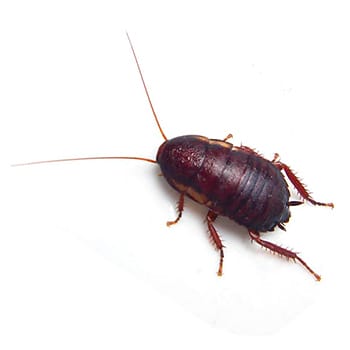
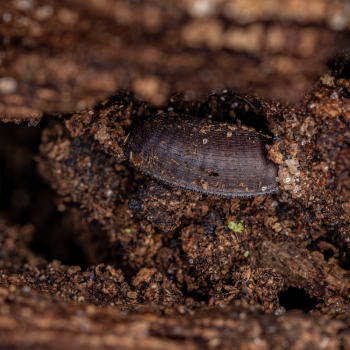
Florida Woods Cockroach (Eurycotis floridana)
These roaches are also known as Palmetto Bugs. They look similar to American cockroaches but are much smaller and a little rounder, never growing longer than about 1.5″.
They don’t like being inside, they are very happy burying in soil and compost piles. If you live in Florida and do any gardening, you’ve surely encountered some of these woods cockroaches.
It’s rare to have any real population control problems with this type of roach. And though one may wander into a home looking for moisture, generally they remain outside and buried in vegetation and dirt.

Which Type is the Worst to Deal With?
The German cockroach is the worst type of roach to deal with! These fast-breeding fiends, once they become an infestation and are building nests… are nearly impossible to eradicate without professional help.
There is NEVER just one German roach, unlike the other types of roaches that are commonly found inside Florida homes. When you see one, there are more hiding. And if you see a bunch, there’s likely a nest and they are making more of themselves.
Plus, they can trigger allergies and asthma, making them a double threat.
Roach Species Known to Exist in Florida
- American cockroach
- German cockroach
- Florida woods cockroach
- Smokybrown cockroach
- Oriental cockroach
- Brown-banded cockroach
- Australian cockroach
- Asian cockroach
- Cuban cockroach
- Surinam cockroach
- Field cockroach
- Madeira cockroach
- Brown cockroach
- Pale-bordered field cockroach
- Greenhouse cockroach
- Ruddy cockroach
- Small yellow cockroach
- Large yellow cockroach
- Lobster cockroach
- False death’s head cockroach
- Death’s head cockroach
- Orange-headed cockroach
- Dwarf cockroach
- Florida Sand Roach
- Florida Beetle Cockroach
- Harlequin cockroach
- Cuban burrowing cockroach
- Fulvous Wood Cockroach
- Pale Bordered Field Cockroach
- Dark-faced cockroach
How to Keep these Creepy Crawlies Away
So, what can you do to keep these creepy crawlies at bay? Sealing up cracks, keeping your kitchen clean, and investing in some good old-fashioned roach traps are a great start.
But if you’re facing a full-on infestation, call in the professionals. Remember, a roach problem today can turn into a full-blown nightmare tomorrow.
Fascinating (and Frightening) Facts About Florida's Cockroaches
- Which Ones Fly?
The American cockroach and the Smokybrown cockroach are both capable of flight, although they prefer to scuttle away from danger. - The Hardest to Get Rid Of:
The German cockroach takes the top spot for being the hardest to eliminate. Their rapid reproduction rate and tendency to nest in small crevices and behind walls make them incredibly resilient to extermination efforts. - Dangerous Roaches:
While no cockroach in Florida is inherently dangerous in terms of venom or bites, they can pose health risks.
Cockroaches can carry and spread bacteria, leading to food contamination and potential illnesses such as Salmonella and E. coli infections. Additionally, their droppings and shed skins can trigger allergies and asthma in sensitive individuals.
Battling the Infestation
Cockroaches in Florida are most attracted to two things: food and water. Your strategy to eliminating roaches inside your home should be 1) never leave food (or crumbs) exposed and 2) fix anything leaky!
Dealing with cockroaches in Florida requires a multi-faceted approach:
- Prevention: Seal cracks and crevices, keep your home clean, and store food in airtight containers.
- Elimination: Use baits, traps, and insecticides, or consider professional pest control services for severe infestations.
- Maintenance: Regularly check for signs of cockroaches and act swiftly to prevent small problems from becoming large infestations.
You may also like…

